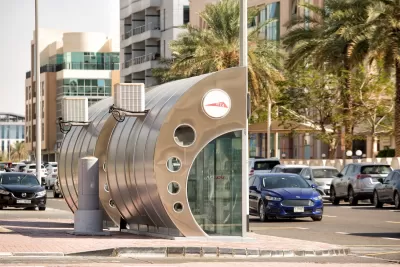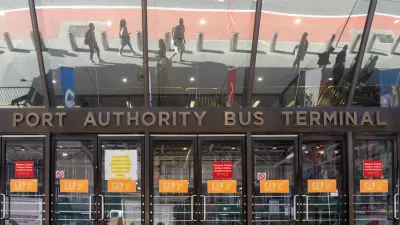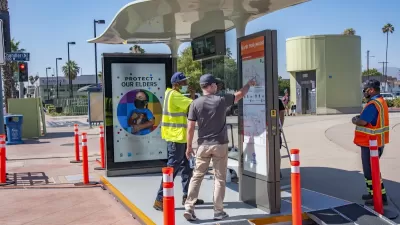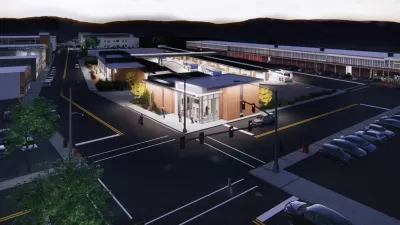While some rail stations get the starchitect treatment, most bus stops fail to offer aesthetic value. One study suggests this is a mistake.

An Italian study published in Transportation Research Interdisciplinary Perspectives shows that the aesthetics of bus stops can affect how likely riders are to use them. As Sonja Wind notes in Bloomberg CityLab, the researchers used virtual reality helmets to offer bus riders two different experiences.
According to lead author Armando Cartenì, “It means that there are other attributes, in addition to the traditional ones of waiting time, travel time and ticket cost, to attract users to bus transport.” The study found that respondents were willing to pay an extra 25 to 40 percent for fares to use more attractive facilities.
“Apart from increasing passenger satisfaction and ticket revenue, building more attractive bus facilities would draw more riders to public transportation, reducing emissions and congestion associated with private car use.” Yet, especially in the United States, most bus stops have minimal facilities like shade and seating, let alone aesthetic elements.
FULL STORY: What a Beautiful Bus Stop Can Do

Study: Maui’s Plan to Convert Vacation Rentals to Long-Term Housing Could Cause Nearly $1 Billion Economic Loss
The plan would reduce visitor accommodation by 25,% resulting in 1,900 jobs lost.

North Texas Transit Leaders Tout Benefits of TOD for Growing Region
At a summit focused on transit-oriented development, policymakers discussed how North Texas’ expanded light rail system can serve as a tool for economic growth.

Why Should We Subsidize Public Transportation?
Many public transit agencies face financial stress due to rising costs, declining fare revenue, and declining subsidies. Transit advocates must provide a strong business case for increasing public transit funding.

How to Make US Trains Faster
Changes to boarding platforms and a switch to electric trains could improve U.S. passenger rail service without the added cost of high-speed rail.

Columbia’s Revitalized ‘Loop’ Is a Hub for Local Entrepreneurs
A focus on small businesses is helping a commercial corridor in Columbia, Missouri thrive.

Invasive Insect Threatens Minnesota’s Ash Forests
The Emerald Ash Borer is a rapidly spreading invasive pest threatening Minnesota’s ash trees, and homeowners are encouraged to plant diverse replacement species, avoid moving ash firewood, and monitor for signs of infestation.
Urban Design for Planners 1: Software Tools
This six-course series explores essential urban design concepts using open source software and equips planners with the tools they need to participate fully in the urban design process.
Planning for Universal Design
Learn the tools for implementing Universal Design in planning regulations.
City of Santa Clarita
Ascent Environmental
Institute for Housing and Urban Development Studies (IHS)
City of Grandview
Harvard GSD Executive Education
Toledo-Lucas County Plan Commissions
Salt Lake City
NYU Wagner Graduate School of Public Service





























